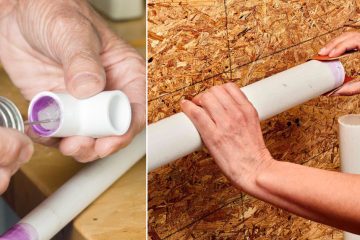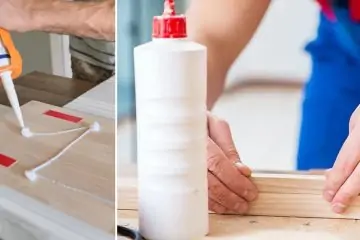Perspex, also known by the brand name Plexiglas or generically as acrylic, is a versatile plastic material that can be used for a variety of applications from custom aquariums to decorative accents. With the right adhesive and preparation, Perspex can be securely bonded to wood to create beautiful and functional projects. In this guide, we’ll walk through the steps for how to glue perspex to wood.
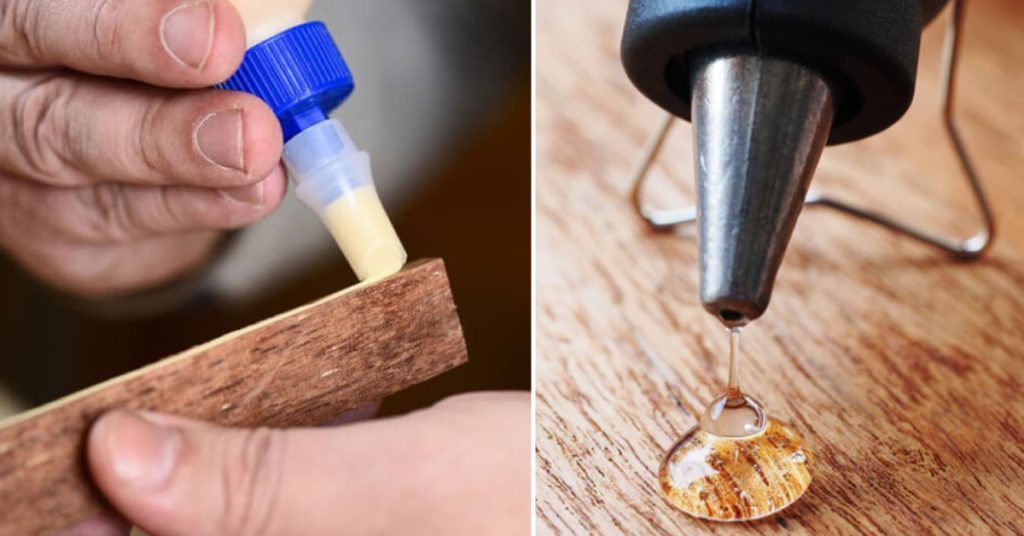
Key Takeaways:
- Choose compatible adhesives like acrylic, epoxy, polyurethane or cyanoacrylate glues
- Lightly sand then clean surfaces with isopropyl alcohol
- Apply a thin, even layer of adhesive and clamp materials while curing
- Let adhesive fully cure; up to 48 hours for acrylics
- For clear bonds, use optical adhesives and vertical curing
4 Trustworthy Steps for How to Glue Perspex to Wood
Here are the steps you need to follow for how to glue perspex to wood:
Step 1: Choosing the Right Adhesive
The key to creating a strong, long-lasting bond between Perspex and wood is using the right adhesive. Here are some of the best options:
- Acrylic adhesives – Designed specifically for bonding acrylic to various surfaces, these adhesives provide optical clarity and flexibility. Brands like Acrifix and Evostik provide exceptional results.
- Epoxy – A two-part adhesive that cures to a rigid, durable bond. Epoxy has high shear and tensile strength perfect for load-bearing projects.
- Polyurethane – Flexible and waterproof, polyurethane glues like Gorilla Glue expand to fill gaps while bonding. Great for outdoor applications.
- Cyanoacrylate – Commonly called “super glue”, cyanoacrylates provide quick bonds for small-scale projects. They lack long-term durability.
Consider the type of project when selecting an adhesive. Acrylic adhesives excel when optical clarity is key, while epoxy suits heavy-duty structural applications.
Step 2: Preparing the Surfaces
Proper surface preparation is vital for acrylic adhesives to bond correctly. Follow these steps:
- Lightly sand the Perspex and wood with 120-150 grit sandpaper to create a rough surface texture.
- Clean thoroughly with isopropyl alcohol to remove any oils, dust, or debris.
- Avoid over-handling the surfaces after cleaning to prevent transferring dirt or oils from your hands.
Some adhesives like epoxy also require “keying” the surfaces, which produces an intricate pattern for the glue to grip. Lightly score the Perspex and wood in a crosshatch pattern with an X-Acto knife before sanding and cleaning.
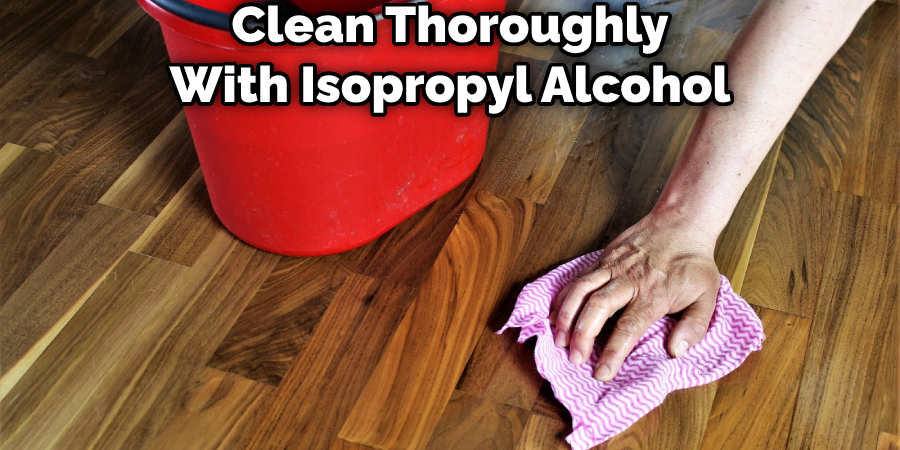
Step 3: Applying the Adhesive
With clean surfaces prepped, it’s time to apply the adhesive:
- Follow the adhesive manufacturer’s instructions precisely. Do not improvise.
- Apply a thin, even layer on both surfaces. Too much adhesive makes the bond weaker.
- The adhesive must cover the entire bond area. If possible, apply to the smaller piece for more control.
- Avoid air bubbles by gently pressing materials together, forcing bubbles to the edges.
- Use clamps, tape or small nails to hold the Perspex and wood securely as the adhesive sets. Do not move or stress the materials until fully cured.
- Acrylic adhesives require a long cure time, up to 48 hours. Be patient for maximum strength.
Step 4: Achieving an Optical Bond
For clear applications where the adhesive will be visible, like a display case, extra steps ensure optical clarity:
- Select the clearest drying adhesive like Acrifix 1R0115.
- Apply the thinnest adhesive layer possible, ideally 0.05 – 0.1mm thick.
- For bubble-free application, use adhesive tape or LM glazing film to gently lower Perspex onto the wood from above.
- Cure the project vertically with Perspex side down to prevent drips marring the surface.
With care, optical bonds between Perspex and wood can be strikingly clear and beautiful.
You Can Check It Out to Glue Styrofoam to Wood.

5 Tips for Successfully Gluing Perspex to Wood
Follow these tips to achieve success gluing Perspex to wood:
- Test adhesive compatibility and application on scrap pieces first
- Avoid over-clamping, which can squeeze adhesive away from the bond area
- Let adhesive fully cure before stressing the bond through movement or weight
- Consider reinforcing structural joints with discreet brackets or corner braces
- For outdoors, use marine-grade adhesives and seal project edges against moisture
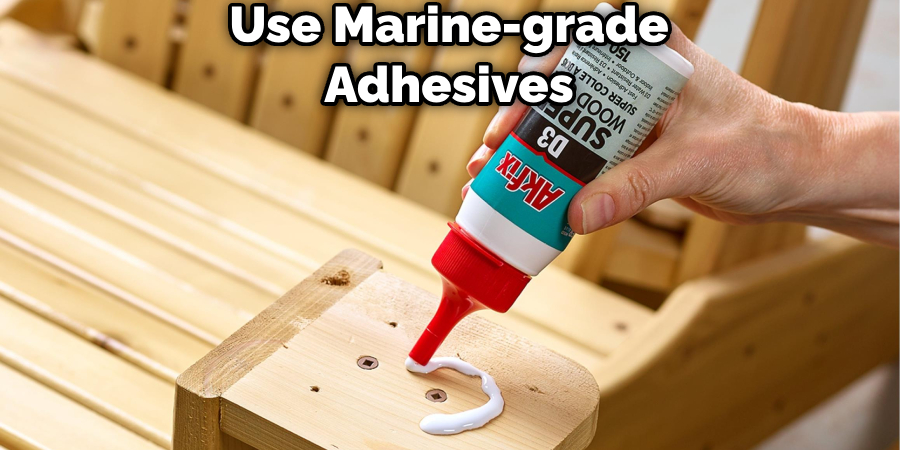
FAQs About How to Glue Perspex to Wood
What Adhesive is Used for Perspex to Wood?
To bond Perspex to wood, you can use solvent-based adhesives like methyl methacrylate (MMA) adhesives, cyanoacrylate (super glue), epoxy adhesives, polyurethane adhesives, or silicone adhesives. Each of these adhesives offers a strong and durable bond when applied according to the manufacturer’s instructions. Ensure that the surfaces are clean, dry, and free from contaminants before applying the chosen adhesive for optimal adhesion.
What Kind of Glue to Use on Perspex?
When working with Perspex, it’s best to use adhesives specifically formulated for acrylics, such as solvent-based adhesives like methyl methacrylate (MMA) adhesives, cyanoacrylate (super glue), epoxy adhesives, polyurethane adhesives, or silicone adhesives. Each of these adhesives provides a strong and reliable bond when applied according to the manufacturer’s instructions. It’s important to ensure that the Perspex surfaces are clean, dry, and free from contaminants before applying the chosen adhesive for optimal adhesion.
What is the Best Glue for Wood and Acrylic?
When bonding wood and acrylic, it’s best to use adhesives suitable for both materials, such as solvent-based adhesives like methyl methacrylate (MMA) adhesives, epoxy adhesives, cyanoacrylate (super glue), polyurethane adhesives, or silicone adhesives. Each of these adhesives provides a strong and lasting bond when applied according to the manufacturer’s instructions. It’s important to ensure that the surfaces are clean, dry, and free from contaminants before applying the chosen adhesive for optimal adhesion.
What is the Best Glue for Wood to Plastic?
When bonding wood to plastic, effective adhesives include cyanoacrylate (super glue), epoxy adhesives, polyurethane adhesives, and hot melt adhesives. These adhesives provide strong and lasting bonds when applied according to the manufacturer’s instructions. It’s crucial to ensure that the surfaces are clean, dry, and free from contaminants before applying the chosen adhesive for optimal adhesion.
Conclusions
With the proper adhesive choice, surface preparation, application techniques, and curing time, you can securely bond Perspex to wood for stunning results. Let me know if you have any other questions!
